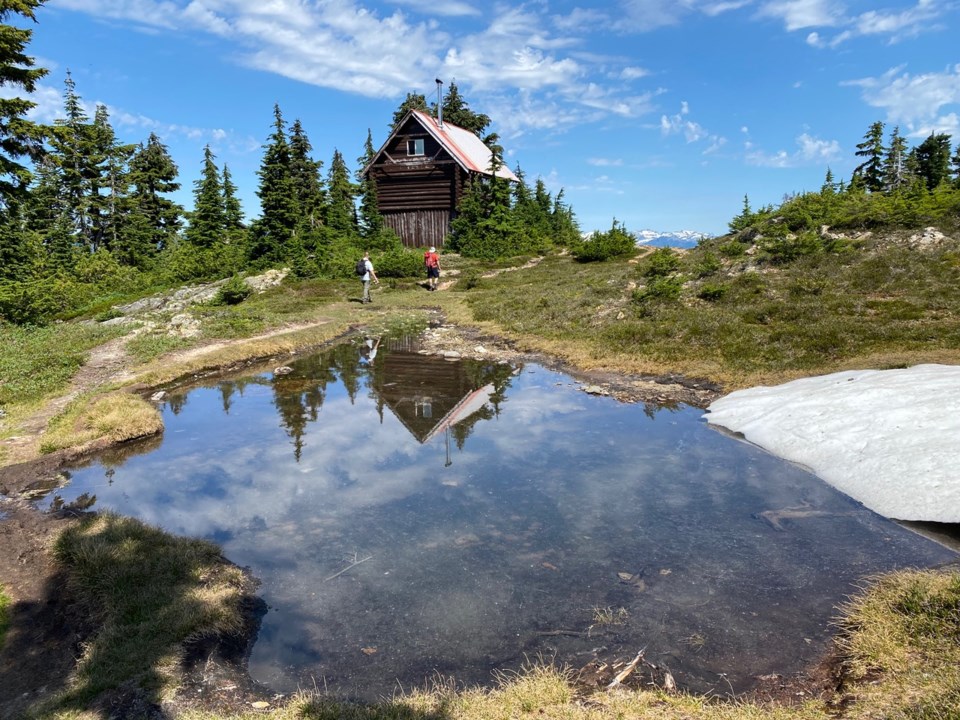Tetrahedron Provincial Park occupies the 60 square kilometres of mountains above Gibsons, Roberts Creek and Sechelt, and from its heights looks out over Howe Sound, the Salish Sea, and Sechelt and Salmon Inlets. The park was created in 1995 after a protracted environmental battle and includes within its boundaries the headwaters of Chapman and Gray Creeks, the source of the Coast’s water supply. The park is named after Mt. Tetrahedron, a Matterhorn-shaped peak, which is the highest point in the park at 1,727m (c. 5,600 feet). Tetrahedron’s sister summits are Panther Peak (1,681m) and Mt. Steele (1,651m).
The park is not easy to access and despite its brooding proximity to Gibsons and Sechelt, most locals will never visit. The usual access is via the Gray Creek logging road, with rough two-wheel drive access to the lower parking lot and 4X4 to the upper lot. There is no access beyond the park boundary for anything other than foot traffic. The trail system begins at the upper parking lot and leads to the lakes, cabins, and the alpine areas (above c.1,500m, 5,000 feet).
Tetrahedron PP is an all-season park with foot access in the summer and ski/snowshoe access in the winter. In the 1990s, after the park was created, the trails were augmented by the construction of four cabins at Batchelor, Edwards and McNair lakes, and Mt. Steele. This project was masterminded by the Tetrahedron Ski Club, now Tetrahedron Outdoor Club (TOC) and the club has done sterling work over the years in managing and maintaining the cabins. For more info on all aspects of the park, Google Tetrahedron PP.
One of the earliest backwoodsmen (1960s) on the Sunshine Coast was John Hind-Smith, and John’s memory is commemorated by a lake named after him, which lies at the foot of Panther Peak. When John died about 20 years ago, he left a bequest to the Sunshine Coast Natural History Society, with stipulations that the money be used to further outdoor education locally. Apropos of this, the SCNHS voted to spend money on interpretive signage within Tetrahedron PP. This summer, the Tetrahedron Outdoor Club had a major project to re-roof the Mt. Steele cabin, which involved numerous people and expensive helicopter time, so, the two projects came together to maximize efficiencies.
With BC Parks approval, the SCNHS conducted a three-day bio blitz or biological survey of the alpine area of Mt. Steele, with four naturalists recording every species of bird, tree, plant, fungi, butterfly, bat, bug, and mammal they could find. The results of this work (still in progress) can be viewed on the i-Nat website (follow Rand Rudland). I will continue this story in my next column.
To report your sightings or questions contact [email protected] or 885-5539. Good Birding.



